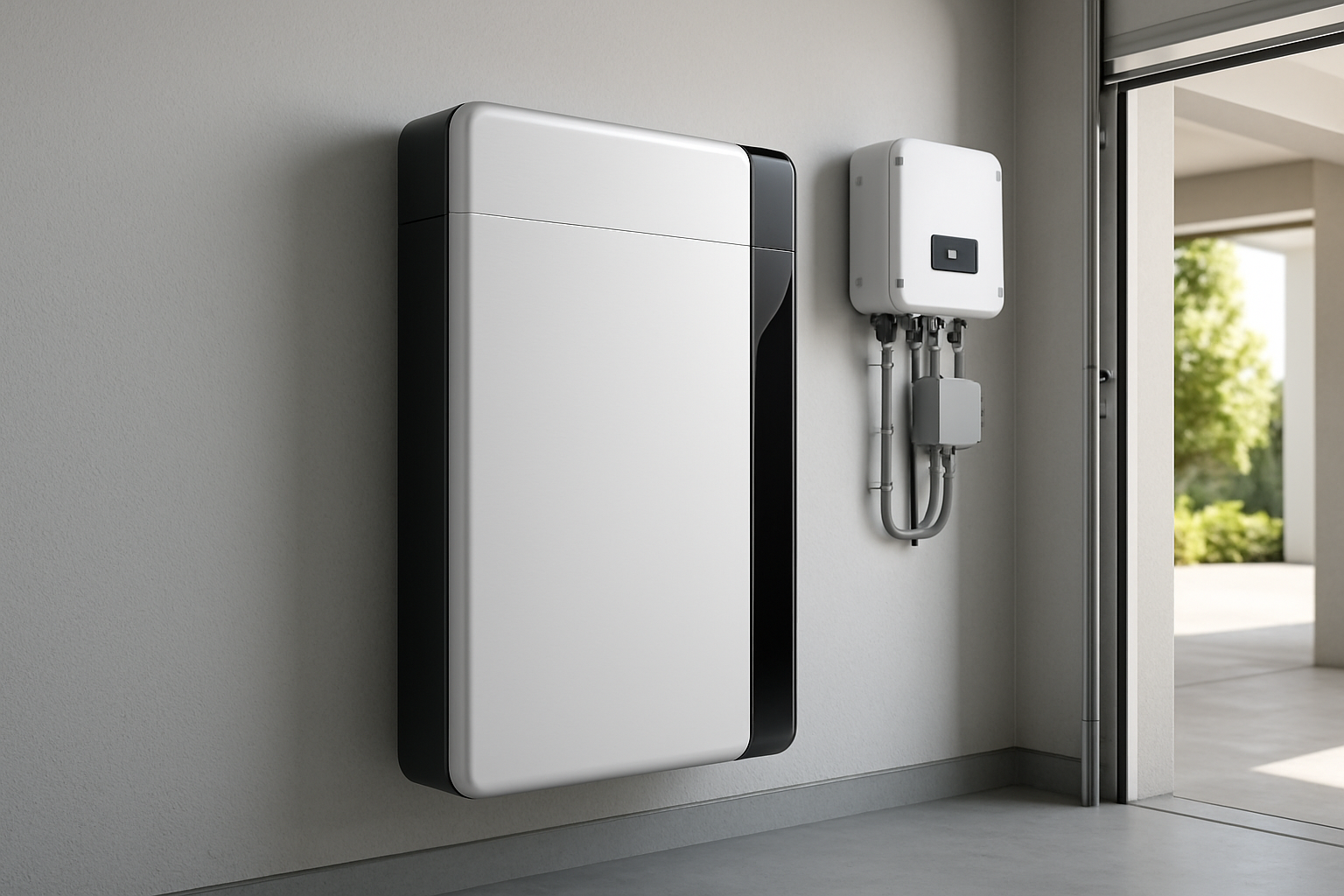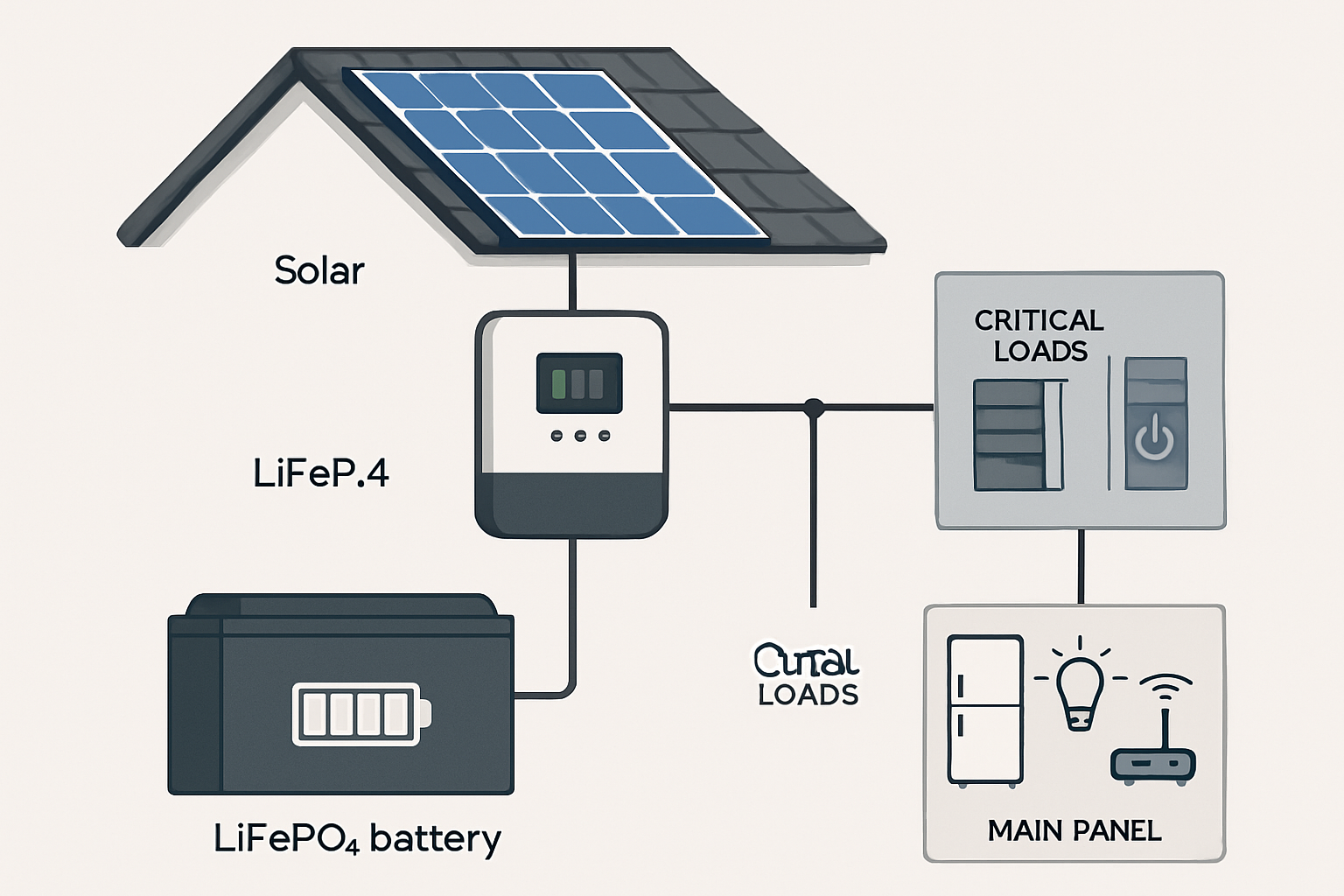The thought of a power outage brings a familiar sense of uncertainty. Will the food in the refrigerator spoil? Can medical equipment remain operational? The key to reliable backup power isn't just about purchasing a large battery; it's about meticulous load planning. This process is the foundation for creating an emergency power system that is both effective and economical. This article provides a detailed method for calculating your precise power requirements, ensuring you have the right amount of energy when you need it most.
Why Accurate Load Planning is Non-Negotiable
Properly sizing an emergency battery system is a critical task that moves beyond simple estimation. It involves a careful analysis of your actual energy consumption to ensure reliability and avoid unnecessary costs.
Beyond Guesswork: The Risks of Improper Sizing
An undersized battery system will fail to support your essential devices through an outage, defeating its purpose entirely. Conversely, an oversized system results in a significant overinvestment in capacity that you may never use. Precise battery capacity calculation protects against both scenarios, ensuring your investment is perfectly aligned with your security needs.
The Foundation of Energy Independence
Achieving true energy independence starts with understanding your consumption. Load planning is the first step toward designing a resilient and efficient emergency power setup. It empowers you to make informed decisions, creating a system that provides peace of mind during power disruptions without breaking the budget.
A Step-by-Step Guide to Calculating Your Emergency Load
Follow this structured approach to accurately determine the specifications for your power outage backup battery.
Step 1: Identify Your Critical Appliances
The first step is to distinguish between essential and non-essential devices. Critical loads are items vital for safety, health, and communication during an outage. This typically includes refrigerators, specific lights, medical equipment, and internet routers. Create a list of only the appliances you absolutely need to power. Backing up just these 'critical loads' is often more practical and affordable than attempting to power an entire home.
| Appliance | Is it Critical? (Yes/No) |
|---|---|
| Refrigerator/Freezer | Yes |
| CPAP Machine | Yes |
| Wi-Fi Router & Modem | Yes |
| A few LED Lights | Yes |
| Central Air Conditioner | No |
| Electric Stove | No |
Step 2: Determine Power Consumption (Watts)
Every appliance has a power rating in watts (W). You need to identify two figures for items with motors or compressors: running watts and starting (or surge) watts. Running watts is the continuous power the device uses, while starting watts is the brief, higher burst of power needed to turn it on. You can usually find this information on the appliance's label or in its manual.
| Appliance | Estimated Running Watts | Estimated Starting Watts |
|---|---|---|
| Refrigerator (ENERGY STAR) | 150 - 200 W | 1000 - 1200 W |
| LED Light Bulb (60W Equiv.) | 10 W | 10 W |
| Wi-Fi Router | 5 - 15 W | 5 - 15 W |
| Sump Pump (1/3 HP) | 800 W | 1300 W |
| CPAP Machine | 30 - 60 W | N/A |
Note: These are estimates. Always check your specific appliance for exact wattage requirements.
Step 3: Estimate Daily Energy Usage (Watt-hours)
Next, calculate the total energy each critical appliance will consume over a 24-hour period. Use the following formula:
(Running Watts) x (Hours of Use per Day) = Daily Energy Usage (Wh)
For appliances that cycle on and off, like a refrigerator, estimate their total run time. A refrigerator typically runs for about 8 hours a day.
- Refrigerator: 200 W x 8 hours = 1600 Wh
- Four LED Lights: (4 x 10 W) x 6 hours = 240 Wh
- Wi-Fi Router: 15 W x 24 hours = 360 Wh
- Total Daily Energy Needs: 1600 + 240 + 360 = 2200 Wh
Translating Your Load into the Right Battery Capacity
With your total daily energy needs calculated, you can now determine the required battery size.
From Watt-hours to Kilowatt-hours (kWh)
Battery capacity is typically measured in kilowatt-hours (kWh). To convert your daily usage from Wh to kWh, simply divide by 1000.
2200 Wh / 1000 = 2.2 kWh
This means you need a battery that can supply at least 2.2 kWh of energy per day.
Factoring in System Inefficiencies and Depth of Discharge (DoD)
No system is 100% efficient. You must account for energy losses from the inverter (which converts DC battery power to AC for your appliances) and the battery's Depth of Discharge (DoD). DoD is the percentage of the battery's total capacity that can be safely used. Modern Lithium Iron Phosphate (LiFePO4) batteries have a high DoD, often 80-90% or more, making them highly efficient for storage applications. Inverter efficiency typically ranges from 95% to 98%.
For a detailed look at how these metrics affect system output, the ultimate reference on solar storage performance offers valuable insights. A more realistic calculation is:
Required Capacity (kWh) = Daily Energy Needs (kWh) / (DoD x Inverter Efficiency)
Example: 2.2 kWh / (0.90 DoD x 0.95 Inverter Efficiency) = 2.57 kWh
Planning for Autonomy: How Many Days of Backup?
Days of autonomy refers to how long your system can power your critical loads without any recharging. For most residential settings, planning for 1 to 3 days of autonomy provides a solid safety net against extended outages.
Total Battery Size (kWh) = Adjusted Required Capacity (kWh) x Days of Autonomy
Example for 2 days of autonomy: 2.57 kWh x 2 = 5.14 kWh. A 5 kWh battery system would be a suitable choice.
Your Blueprint for Uninterrupted Power
Careful load planning is the most important part of designing an emergency power system. By systematically identifying critical loads, calculating their energy consumption, and accounting for system variables, you can accurately perform an emergency battery sizing. This data-driven approach ensures you invest in a solution that is perfectly tailored to your needs, providing reliable, uninterrupted power and genuine peace of mind.
Frequently Asked Questions
How do I find the wattage of my appliances?
The running and sometimes starting wattage can be found on the appliance's data plate or label, often located on the back or bottom of the device. If it's not listed, the owner's manual is the next best place to check. You can also use a power consumption meter for a precise reading.
What is the difference between kW and kWh?
Kilowatt (kW) is a measure of power, indicating how much energy an appliance consumes at any given moment. Kilowatt-hour (kWh) is a measure of energy, representing the total amount of power consumed over a period of time. Think of kW as speed and kWh as distance traveled.
Why is LiFePO4 a good choice for emergency backup?
LiFePO4 (Lithium Iron Phosphate) batteries offer several advantages for energy storage systems. They have a long cycle life, can be deeply discharged (high DoD) without significant degradation, are thermally stable, and are considered one of the safest lithium battery chemistries. According to research from the The Role of Critical Minerals in Clean Energy Transitions, the demand for battery storage is growing rapidly, and technologies like LiFePO4 are central to this expansion.
Can I add more batteries to my system later?
Yes, many modern energy storage systems are modular, allowing for future expansion. If your energy needs increase, you can often add more battery capacity. It is important to design your initial system with scalability in mind.





Leave a comment
All comments are moderated before being published.
This site is protected by hCaptcha and the hCaptcha Privacy Policy and Terms of Service apply.